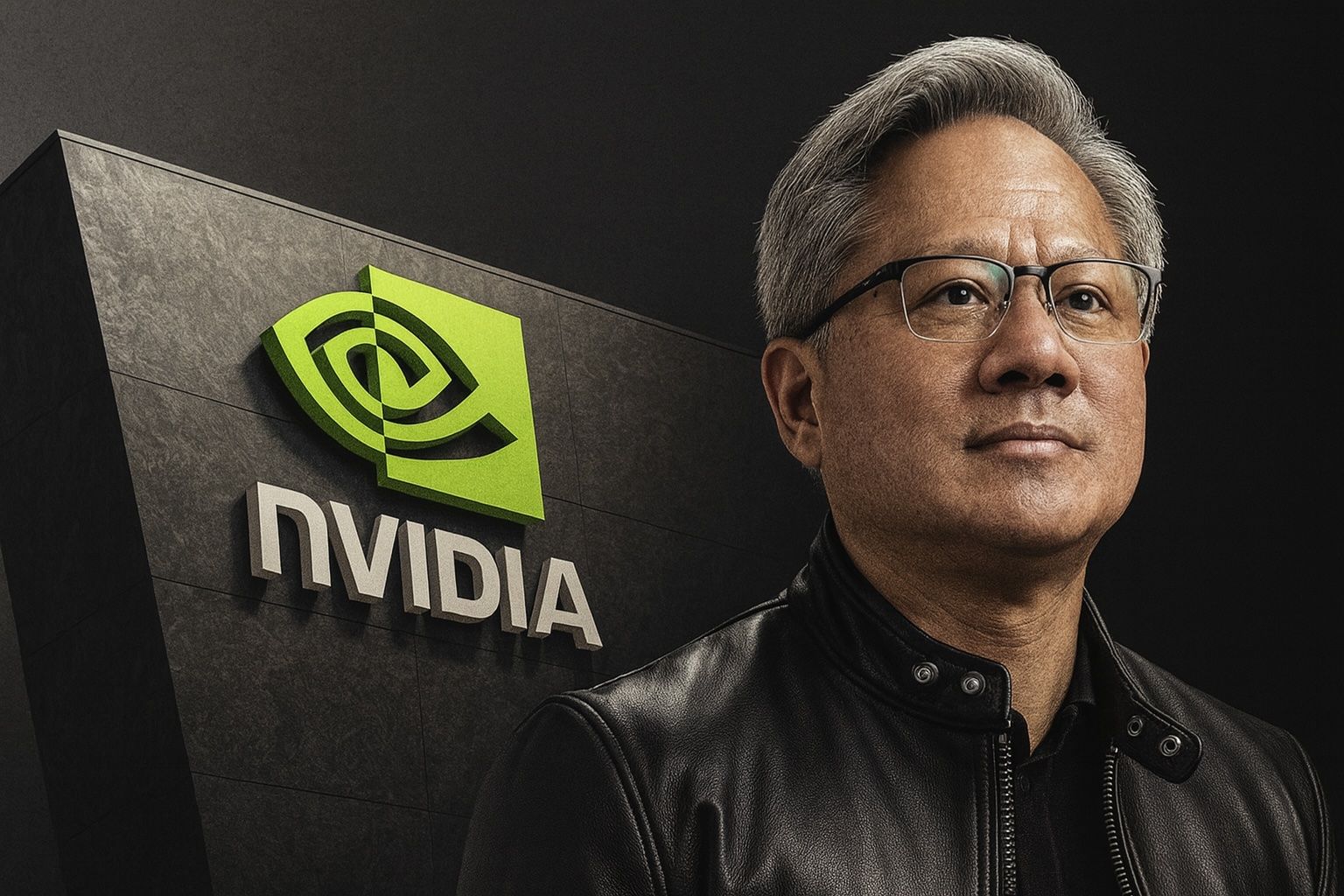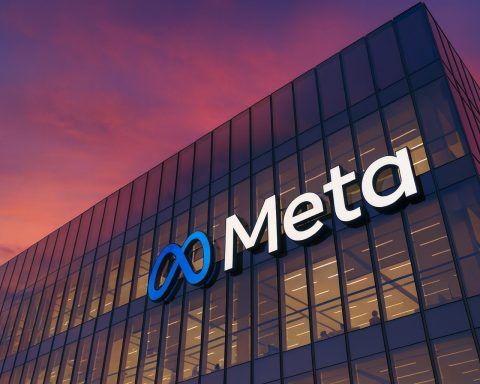On November 18, 2025, Meta Platforms (NASDAQ: META) is back in the spotlight on multiple fronts:
- global coverage of Alexandr Wang, the 28‑year‑old AI billionaire hired via a $14.3 billion deal to lead Meta Superintelligence Labs,
- fresh analyst commentary arguing that Meta’s AI roadmap is still “underappreciated”, and
- a new leadership shake-up, with Meta’s chief revenue officer and other senior executives heading for the exits. [1]
At the same time, a new Seeking Alpha note titled “Meta: P/E 24 Means Failure, But Success Is Possible” argues that the market is treating Meta’s multi‑billion‑dollar AI gamble as if it will mostly disappoint, even while the company trades on a mid‑20s price‑to‑earnings ratio that’s close to or below the broader market. [2]
Here’s what you need to know today about Meta’s AI strategy, the Alexandr Wang hire, the latest analyst views, and how all of this fits into the evolving story around META stock.
Meta’s $14.3 Billion Superintelligence Bet
In June 2025, Meta announced a $14.3 billion investment in Scale AI, the San Francisco-based data‑labeling and model‑evaluation company founded by Alexandr Wang. Multiple reports say Meta took roughly a 49% stake, with the investment explicitly tied to recruiting Wang to lead the company’s new AI unit. [3]
Shortly after the deal, Meta created Meta Superintelligence Labs (MSL), a division tasked with unifying:
- long‑term AI research,
- infrastructure for training and deploying large models, and
- product teams building AI into Meta’s family of apps and devices. [4]
In an internal memo cited by Indian media, Wang framed the reorganization around the idea that “superintelligence is coming” and that Meta needs to align research, product and infrastructure to have a shot at building it. [5]
For Meta, the Scale AI transaction is more than an acquisition. It’s a talent‑plus‑infrastructure package: Scale’s data pipelines and evaluation tools are critical ingredients for training state‑of‑the‑art models at the pace Meta needs to keep up with OpenAI, Google DeepMind and Anthropic. [6]
Who Is Alexandr Wang, Meta’s New AI Billionaire?
Today’s coverage from outlets such as the Financial Express and others is re‑introducing Alexandr Wang to a global audience that may only know him as “the AI billionaire Meta paid $14 billion for.” [7]
Key facts about Wang that matter for Meta’s AI push:
- Age & background – Born in 1997 in Los Alamos, New Mexico, to Chinese‑immigrant physicist parents, Wang showed early talent in math and programming. [8]
- MIT dropout turned founder – He enrolled at MIT but dropped out in 2016 to co‑found Scale AI, which provides data labeling and large‑language‑model evaluation for major tech and defense clients. [9]
- Youngest AI billionaire – By his mid‑20s he was on Forbes’ billionaire list, and 2025 estimates peg his net worth in the multi‑billion‑dollar range, driven largely by his Scale AI stake and the Meta deal. [10]
- Now Chief AI Officer at Meta – Meta’s own executive bio confirms that Wang joined as Chief AI Officer in 2025 and now leads Meta Superintelligence Labs, overseeing both foundational research and productized AI. [11]
Indian tech and business coverage today emphasizes the symbolism of the move: a 28‑year‑old dropout who built a core infrastructure company for AI now effectively controls one of the world’s most ambitious AI programs inside a $1.5 trillion tech giant. [12]
Inside Meta Superintelligence Labs: Ambition Meets Reorganization
Mark Zuckerberg has described Meta’s vision as building “personal superintelligence for everyone”, a phrase he highlighted in a recent public video introducing Meta Superintelligence Labs. [13]
Under Wang, MSL is doing several things at once:
- Consolidating teams – Long‑standing research group FAIR and other AI teams have been brought under the superintelligence umbrella, shifting focus from pure research to faster model deployment and product integration. [14]
- Rationalizing headcount – In October, Meta cut about 600 roles across its AI teams as part of a reorganization Wang said was meant to make the group “smaller and faster,” even as Superintelligence Labs continues to hire for key roles. [15]
- Shipping new AI products – Recent reports highlight Meta’s “Vibes” AI feed, which has already reached about 2 million daily active users, growing roughly 1% week over week since early November. [16]
- Powering ad and content systems – AI‑driven ranking and recommendation systems now underpin the majority of feed content and ad delivery across Facebook and Instagram, including the Advantage+ automated ad platform. [17]
This combination of cost cuts, new products and strategic hires is central to today’s debate: is Meta spending too much, or is it quietly building the next dominant AI platform?
Analysts: Meta’s AI Roadmap Is “Underappreciated”
A new GuruFocus note syndicated on Yahoo Finance today under the headline “Meta Draws Attention as Analyst Says AI Roadmap Remains Underappreciated” argues that the market is still undervaluing Meta’s long‑term AI strategy, despite the noise around rising capex. [18]
That piece builds on analysis from Seeking Alpha titled “Meta: The AI Roadmap Remains Underappreciated”, which makes several key points: [19]
- Meta’s core advertising business remains “incredibly strong”, with improving engagement metrics and ad prices.
- Adoption of AI ad tools such as Advantage+ is accelerating, boosting return-on-ad‑spend for marketers.
- AI‑powered recommendation engines are driving higher time‑spent and monetization across Meta’s apps.
Additional data points from other recent research reinforce this picture:
- A Marketing Dive analysis estimated that the annualized revenue run‑rate from Meta’s AI advertising infrastructure, including Advantage+, is now over $60 billion, showing how central AI already is to Meta’s ad business. [20]
- A MarketWatch piece earlier this month highlighted 26% year‑over‑year revenue growth in Meta’s latest quarter and forecast $70–72 billion in AI‑driven capital spending by the end of 2025, while Wedbush analyst Scott Devitt added META to the firm’s “Best Ideas List” with a $920 price target. [21]
Taken together, today’s crop of analyst notes frames Meta as a company whose AI spending is painful for margins in the short term, but already showing tangible revenue benefits – with more potential upside if Wang’s superintelligence push pays off. [22]
P/E 24: Failure or Hidden Upside for META Stock?
The new Seeking Alpha article “Meta: P/E 24 Means Failure, But Success Is Possible” tackles the question most investors are asking today:
At roughly 24x earnings, is META expensive, cheap, or fairly priced given its AI ambitions? [23]
Several data providers put Meta’s trailing price‑to‑earnings ratio in the mid‑20s as of mid‑November 2025:
- Around 26.3x according to MarketBeat. [24]
- About 25.9x based on Fullratio’s analysis, roughly in line with its three‑year average and slightly below its 10‑year average. [25]
- Estimates clustered in the low‑to‑mid‑20s on other platforms and in the Seeking Alpha article itself. [26]
The article’s core argument, based on that mid‑20s multiple, is roughly:
- If Meta’s AI super‑spending “fails” — meaning it doesn’t materially lift long‑term earnings beyond what the legacy ad business could have delivered — then a P/E in the mid‑20s may actually be too rich for a mature social‑media and advertising company facing regulatory and competitive pressure. [27]
- If the AI investments work, powering a step‑change in monetization (from AI agents, improved ad tools, new hardware and subscription experiences), then today’s valuation could prove conservative, with earnings growth outpacing what the market currently discounts. [28]
The author notes that the S&P 500 as a whole trades at a similar or slightly higher multiple, depending on the metric, and concludes that the market currently leans toward a skeptical, “bearish interpretation” of Meta’s AI spending – hence the “P/E 24 means failure” framing. [29]
In other words, AI success isn’t fully priced in, but AI failure isn’t priced out either. That tension is exactly what’s creating today’s volatility in META shares.
Leadership Shake-Up: CRO and AI Veterans Head for the Exit
Adding complexity to today’s narrative is a fresh leadership shake-up at Meta.
Multiple outlets report that:
- John Hegeman, Meta’s Chief Revenue Officer and a 17‑year veteran who has overseen key monetization efforts, is leaving to start his own company. [30]
- Responsibility for revenue will shift to other senior leaders, including Andrew Bocking, as part of a broader reorganization. [31]
- Clara Shih, who joined Meta in 2024 to lead its Business AI group, is also departing, according to reports aggregated by Techmeme and others. [32]
- A separate GuruFocus note today describes the situation as a “leadership shakeup” affecting both advertising and AI divisions. [33]
These exits come just days after detailed reporting from European media and financial sites about Yann LeCun, Meta’s long‑time chief AI scientist, planning to leave to launch his own AI‑focused start‑up. [34]
LeCun, a Turing Award winner who founded Meta’s FAIR lab back in 2013, has publicly disagreed with the industry’s current focus on giant language models and has championed alternative architectures. His role has reportedly been marginalized as Wang’s Superintelligence Labs has taken over responsibility for Meta’s major model efforts. [35]
Investors now have to weigh:
- whether Wang’s arrival and the consolidation of power in Superintelligence Labs can offset the loss of seasoned insiders, and
- whether these exits signal healthy renewal or strategic turmoil inside Meta’s AI organization.
AI Boom, Job Cuts and the Wider Tech Context
The tension between surging AI investment and ongoing layoffs is not unique to Meta. A Washington Post analysis today notes that Big Tech companies have announced more than 141,000 job cuts this year, even as AI revenue and valuations set new records. [36]
Meta is a prime example:
- It has slashed roles across its AI teams (about 600 positions in the latest round), yet
- its Superintelligence Labs is still actively hiring for high‑impact, highly‑paid AI roles as the company pivots toward fewer but more specialized employees. [37]
Economists quoted in that piece argue that AI is boosting productivity per employee, which could mean fewer workers are needed to generate the same or higher output – a structural shift that might keep tech employment under pressure even as company profits grow. [38]
For Meta, that dynamic is amplified by Wang’s mandate: build state‑of‑the‑art AI systems that can automate more of the ad creation, targeting and content moderation stack, as well as new user experiences like Vibes and Meta’s in‑app AI assistant.
What Today’s News Means for Meta and the AI Race
Putting all of November 18’s Meta news together, a few themes emerge:
- The Alexandr Wang bet is central, not peripheral
Meta didn’t just buy into Scale AI; it effectively bought Wang’s leadership and made him the company’s AI architect. His track record at Scale – turning high‑quality data and evaluation into a platform business – is exactly what Meta needs as AI moves from research to heavy‑duty infrastructure inside Facebook, Instagram, WhatsApp and its devices. [39] - AI is already paying off in ads – but at a cost
AI‑driven ads and recommendation systems are boosting revenue growth and ad efficiency, with AI ad infrastructure alone on a run‑rate of more than $60 billion. But that comes with massive capital expenditure and visible margin pressure, which has created a disconnect between operational momentum and investor sentiment. [40] - The market is skeptical but not dismissive
A mid‑20s P/E ratio, roughly in line with the broad market, suggests investors are not willing to pay a huge premium for Meta’s AI dreams—yet. The “P/E 24 means failure” framing underscores the idea that current pricing implies only a modest payoff from superintelligence bets relative to the risk involved. [41] - Leadership churn is the wild card
The simultaneous departure of the chief revenue officer, the head of Business AI, and the anticipated exit of Yann LeCun raises questions about internal alignment and execution risk. At the same time, these moves solidify Wang’s influence and could allow Meta to move faster in a unified direction, for better or worse. [42] - Regulators, workers and society are watching
Meta’s push toward “superintelligence” amplifies long‑running concerns about AI safety, data use, and platform power. Wang’s job is not just to deliver models and revenue, but to do so under the microscope of regulators, employees and the public, at a moment when tech layoffs and trust issues are front‑page news. [43]
For Investors and Observers: How to Read Today’s Signals
If you follow Meta as an investor, employee, competitor or policymaker, today’s cluster of stories points to a simple reality:
- Meta is all‑in on AI, structurally and financially.
- The Alexandr Wang–led Superintelligence Labs is now the company’s AI command center.
- The market is discounting a lot of risk into META’s price while acknowledging solid current‑day performance.
- Leadership changes and ongoing layoffs show that the transition to an AI‑first Meta is far from smooth.
Whether this ends up looking more like Meta’s painful but ultimately successful mobile pivot—or its over‑extended metaverse phase—will depend on whether Wang and his teams can translate today’s massive spend and high‑profile hires into durable, defensible AI advantages.
For now, one thing is clear on November 18, 2025: Meta’s AI story, valuation debate and leadership drama are inseparable—and all three are accelerating.
Disclaimer: This article is for informational and news purposes only and does not constitute investment advice. Always do your own research and consult a qualified financial advisor before making investment decisions.
References
1. www.financialexpress.com, 2. seekingalpha.com, 3. www.reuters.com, 4. www.meta.com, 5. www.financialexpress.com, 6. www.financialexpress.com, 7. www.financialexpress.com, 8. en.wikipedia.org, 9. en.wikipedia.org, 10. en.wikipedia.org, 11. www.meta.com, 12. www.financialexpress.com, 13. www.facebook.com, 14. www.lemonde.fr, 15. finance.yahoo.com, 16. www.tipranks.com, 17. www.marketingdive.com, 18. finance.yahoo.com, 19. seekingalpha.com, 20. www.marketingdive.com, 21. www.marketwatch.com, 22. www.gurufocus.com, 23. seekingalpha.com, 24. www.marketbeat.com, 25. fullratio.com, 26. seekingalpha.com, 27. seekingalpha.com, 28. www.marketwatch.com, 29. seekingalpha.com, 30. seekingalpha.com, 31. www.bloomberg.com, 32. www.techmeme.com, 33. www.gurufocus.com, 34. www.lemonde.fr, 35. www.lemonde.fr, 36. www.washingtonpost.com, 37. www.washingtonpost.com, 38. www.washingtonpost.com, 39. www.financialexpress.com, 40. www.marketingdive.com, 41. seekingalpha.com, 42. seekingalpha.com, 43. www.financialexpress.com







